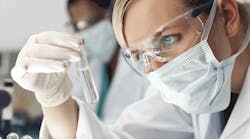An international survey of more than 2,360 scientists and researchers conducted by BioRAFT, Nature Publishing Group, and the University of California Center for Laboratory Safety found that although they respect and understand the need for lab safety measures, in many cases their own lab practices often fall short.
The survey explored a wide variety of topics surrounding lab safety, including researchers’ general perceptions of lab safety measures and practices, whether they felt that they had the right knowledge and tools to be safe in their laboratories and their ability to gauge the gap between researchers’ and supervisors’ views on lab safety. Other findings include:
- The vast majority of respondents – 95 percent – report that lab safety is very or quite important to them personally, and 86 percent report that they feel their lab is a safe place to work. Yet, 64 percent state that people work alone in their lab multiple times per week and 54 percent report that they don’t wear a lab coat at all times.
- While 91 percent of respondents report that they are aware of and understand the minimum training requirements for their lab duties, 40 percent state that they did not receive safety training on specific agents or hazards.
- While 94 percent of senior researchers felt that appropriate safety measures were in place in their labs, only 69 percent of junior researchers agreed.
- In addition, 30 percent of respondents reported that they have at some point in their career been aware of at least one major injury requiring medical attention within their lab.
“Scientists think they’re safe, but their compliance with currently accepted best practices, along with the frequency of injuries, indicate that they’re not,” said Nathan Watson, CEO of BioRAFT. “This points to serious problems in how communication around lab safety and its requirements are being conducted.”
Watson said the survey results are just the beginning of a larger conversation that the scientific community needs to have to improve lab safety.
James Gibson, executive director of the UC Center for Laboratory Safety and Director of UCLA’s Office of Environment, Health & Safety, agreed: “The results of this survey really provide a roadmap for us, determining where we need to focus our efforts to improve lab safety. In the coming months, we’ll be closely analyzing all of these data, continuing our mission of helping academic and commercial labs all across the world make their labs even safer.”
The survey is the first of a series of studies and projects to provide a path for establishing data-driven best practices for laboratory safety. BioRAFT will be publishing a series of posts examining different aspects and implications of the survey.

